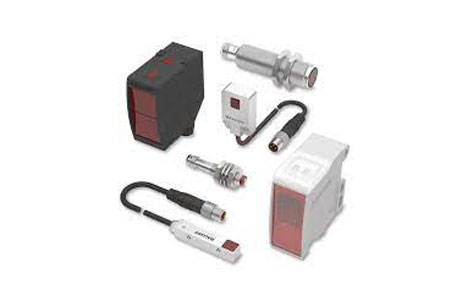Key Takeaway
The working principle of a photoelectric sensor relies on light detection. The sensor consists of an emitter that sends out light and a receiver that detects it. When an object interrupts or reflects the light, the sensor detects the change and converts it into an electrical output.
This process enables the sensor to detect the presence, absence, or distance of objects. Factors like dust, reflection, or misalignment can affect its accuracy, so proper setup is important for reliable performance.
How Light Detection Enables the Function of Photoelectric Sensors
At the heart of every photoelectric sensor is its ability to detect light. But how does this happen? It begins with an emitter that sends out a beam of light, often an infrared or laser beam. When an object interrupts this beam, the sensor detects the change and triggers a response—whether to stop a machine, count items, or alert you to an obstruction.
Imagine a conveyor belt where boxes pass by. The sensor’s light beam continuously scans the path. When a box crosses the beam, the sensor ‘sees’ it, and an action, like stopping the belt or counting the box, occurs instantly. Light detection makes photoelectric sensors incredibly versatile and valuable for precision tasks.

Key Components that Make Up a Photoelectric Sensor
A photoelectric sensor is made up of several critical components, each playing a crucial role in its performance. First, there’s the emitter, which is responsible for emitting a light beam, often infrared or visible light. This light beam is the starting point for the sensor’s detection process. Positioned opposite or alongside the emitter is the receiver, designed to pick up the light beam. When the beam is blocked or reflected by an object, the receiver registers this change, which signals that something has interrupted the path.
Another important component is the signal processor. This part interprets the information received from the receiver and decides what action should be taken. Whether it’s turning off a machine or sounding an alarm, the signal processor makes sure the system reacts appropriately. The combined function of these parts ensures that the photoelectric sensor operates efficiently in various industrial applications.
Step-by-Step Explanation of the Sensor’s Working Process
To understand how photoelectric sensors work, let’s break down the process. It all begins when the emitter sends out a consistent beam of light, which travels through a specified path. The next step is when an object enters the path and interrupts the light beam, causing the receiver to notice the absence of light. This interruption is key to detecting the presence of the object.
Once the interruption occurs, the receiver signals the change to the signal processor, which translates this information into an electrical signal. This signal is used to trigger an output action, such as stopping machinery or activating a warning system. The entire process happens in milliseconds, making these sensors highly responsive and reliable in fast-paced industrial environments.
Factors That Can Affect the Sensor’s Operation and Accuracy
Although photoelectric sensors are highly reliable, several factors can impact their performance. One major factor is ambient light. In brightly lit industrial settings, excess light can interfere with the sensor’s ability to detect changes accurately. While most modern sensors are designed to filter out ambient light, extreme conditions can still cause issues.
Another important factor is dirt and dust. These sensors often operate in harsh environments, and accumulated dirt on the sensor lens can block or distort the light beam, leading to inaccurate readings. Proper cleaning and maintenance are essential to keep the sensors functioning effectively. Additionally, misalignment between the emitter and receiver can result in missed detections or false positives, emphasizing the importance of correct installation and calibration.
Common Variants of Photoelectric Sensors and Their Principles
Photoelectric sensors come in a few different types, each with its own unique function. The first is the through-beam sensor, where the emitter and receiver are placed on opposite sides. This type offers the most reliable detection but requires precise alignment to ensure accurate performance. It’s often used for long-range applications.
Next is the retro-reflective sensor, where both the emitter and receiver are housed in the same unit, and a reflector is placed opposite them. When an object breaks the reflected light beam, the sensor detects the interruption. This variant is easier to install but has a slightly shorter range than through-beam sensors. Finally, there’s the diffuse sensor, which detects light reflected from the object itself, making it suitable for short-range applications without the need for a separate receiver or reflector.
Conclusion
Photoelectric sensors are crucial in industrial automation, offering precise and reliable detection of objects by emitting and receiving light signals. These sensors are widely used for tasks like object detection on conveyor belts, ensuring safety in hazardous zones, and controlling automated systems. By understanding their components and operation, such as the emission of light and the processing of detected signals, you can make informed choices for their applications. With proper usage, photoelectric sensors enhance efficiency, accuracy, and safety in various industrial processes.
